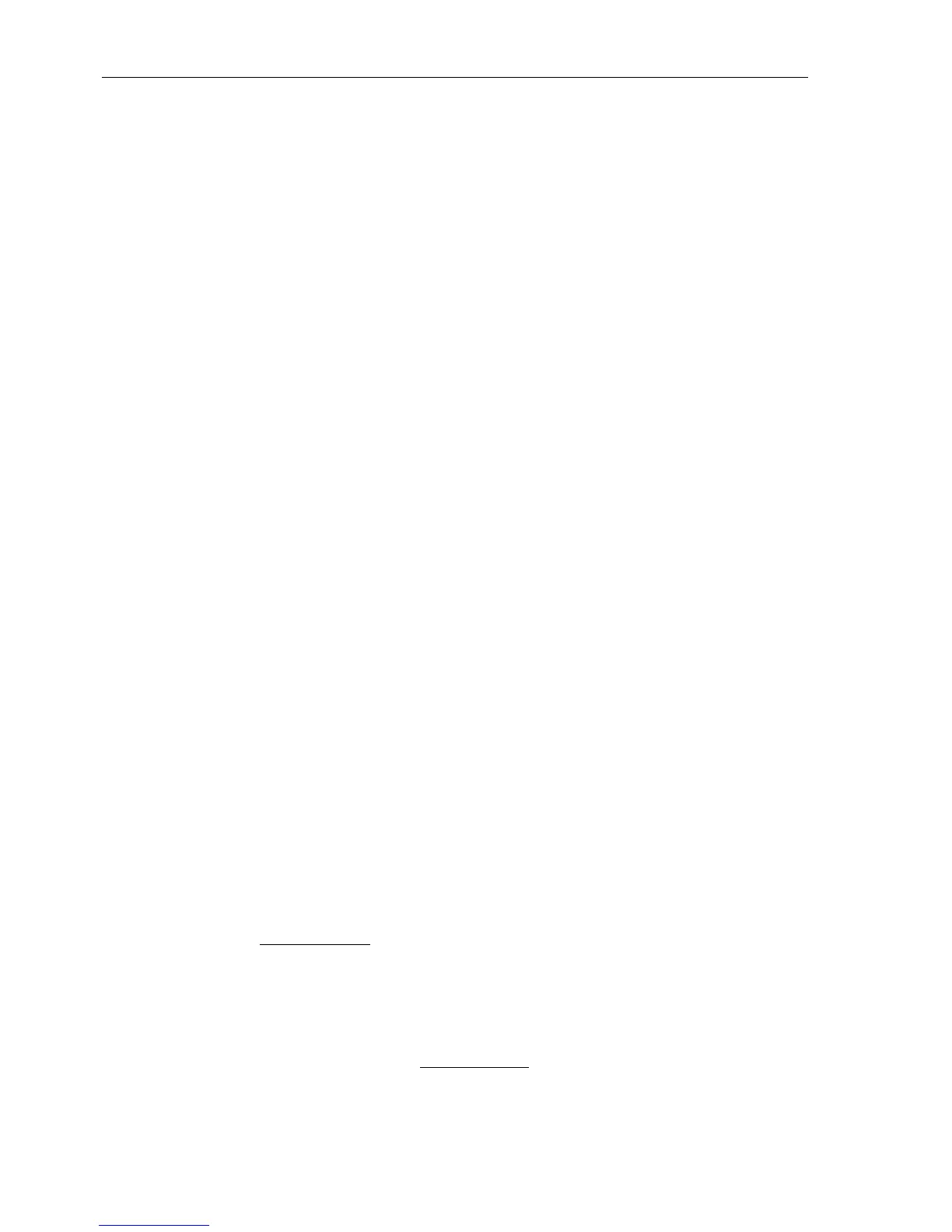Installation and Commissioning
8-70 7SA6 Manual
C53000-G1176-C156-2
the infeed. In case of release (the NC contacts of the outgoing devices are connected
in series) the tests have to be reinterpreted respectively.
A fault is simulated within zone Z1 and overreaching zone Z1B. As a result of the miss-
ingblocking signal, the distanceprotectiontripsafter time delay T1B (slightly delayed).
Now, the direct voltage for the reverse interlocking is switched in. The test is repeated
as described above and ends up with the same result.
At each of the protection devices of the outgoing circuits, a pick-up is simulated. Mean-
while, another short-circuit is simulated as described before for the distance protection
oftheinfeed.Now,thedistanceprotectiontripsaftertimeT1,whichhasalongerset-
ting.
These tests also check the proper functioning of the transmission path. All other tests
which are described in this Subsection 8.3.13.1 are no more necessary. However,
please refer to the last margin heading “Important for All Schemes”!
Permissive Over-
reach Transfer, Un-
blocking
Prerequisite: Teleprotection for Distance prot. (Teleprot. Dist.) is
set in address
121 (Section 5.1) to one of the permissive overreach schemes with a
release signal,
Permissive Overreach or Directional Comparison Pickup
or UNBLOCKING; furthermore, the parameter in address 2101 must be set to FCT
Telep. E/F ON
. Naturally, the corresponding send and receive signals must also be
assigned to the corresponding binary output and input. For the echo function, the echo
signal must be assigned separately to the transmit output!
The function of the permissive overreach transfer schemes is described in Subsub-
sections 6.6.1.4 to 6.6.1.6.
In the case of these release schemes, a simple check of the transmission paths from
one line end is possible using the echo function. The echo function must be activated
at both line ends, i.e. address
2501 FCT Weak Infeed = ECHO only;withtheset-
ting
ECHO and TRIP a trip may result at the line end opposite to the test location!
A short-circuit is simulated outside Z1, with the
Permissive Overreach or UN-
BLOCKING
inside Z1B, with the Directional Comparison Pickup somewhere
in forward direction. This may be done with secondary injection test equipment. As the
device at the opposite line end is not picked up, the echo function comes into effect
there, and a trip command at the line end initiating the test, results.
If no trip command results, the transmission path must be checked again, in particular
that the echo signals are assigned to the transmit outputs.
In case of a phase-segregated transmission the above-mentioned checks are carried
out for each phase. The correct phase allocation must also be checked.
The tests must be executed at both line ends. For three terminal lines, it must be done
at each line end, for each transmission path.
The functioning of the echo delay time and the derivation of the circuit breaker switch-
ingstatusshouldalsobetestedatthistime(thefunctioningoftheprotectionatthe
opposite line end
is tested):
The circuit breaker of the feeder to which the protection belongs must be open, as is
the circuit breaker at the opposite end of this line. As described above, a fault is again
simulated. A receive signal impulse delayed by a little more than twice the signal trans-
mission time, should appear via the echo from the opposite line end; the device should
also issue a trip command.
The circuit breaker at the oppositeline end
should now be closed (with open isolators).
After simulation of the same fault, a receive signal again appears and a trip command
is again issued. However this time the receive signal is additionally delayed by the

